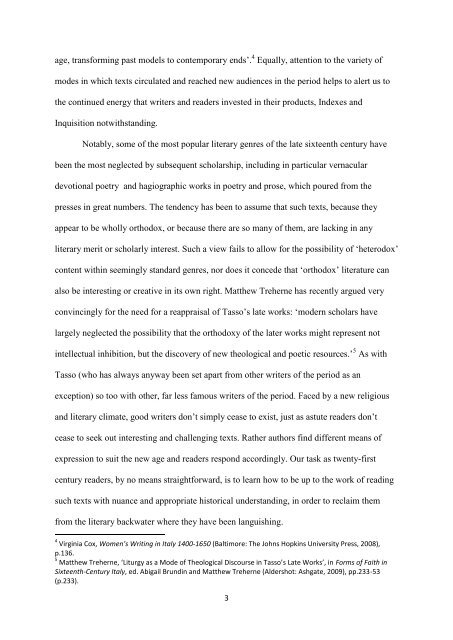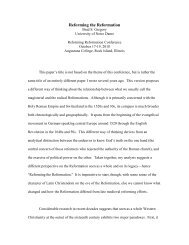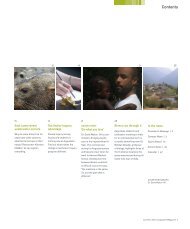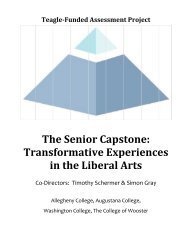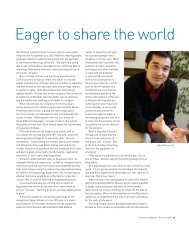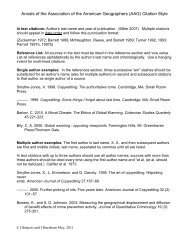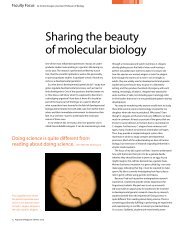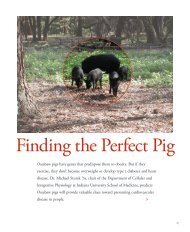Re-Writing Trent, or What Happened to Italian Literature in the Wake ...
Re-Writing Trent, or What Happened to Italian Literature in the Wake ...
Re-Writing Trent, or What Happened to Italian Literature in the Wake ...
Create successful ePaper yourself
Turn your PDF publications into a flip-book with our unique Google optimized e-Paper software.
age, transf<strong>or</strong>m<strong>in</strong>g past models <strong>to</strong> contemp<strong>or</strong>ary ends‟. 4 Equally, attention <strong>to</strong> <strong>the</strong> variety of<br />
modes <strong>in</strong> which texts circulated and reached new audiences <strong>in</strong> <strong>the</strong> period helps <strong>to</strong> alert us <strong>to</strong><br />
<strong>the</strong> cont<strong>in</strong>ued energy that writers and readers <strong>in</strong>vested <strong>in</strong> <strong>the</strong>ir products, Indexes and<br />
Inquisition notwithstand<strong>in</strong>g.<br />
Notably, some of <strong>the</strong> most popular literary genres of <strong>the</strong> late sixteenth century have<br />
been <strong>the</strong> most neglected by subsequent scholarship, <strong>in</strong>clud<strong>in</strong>g <strong>in</strong> particular vernacular<br />
devotional poetry and hagiographic w<strong>or</strong>ks <strong>in</strong> poetry and prose, which poured from <strong>the</strong><br />
presses <strong>in</strong> great numbers. The tendency has been <strong>to</strong> assume that such texts, because <strong>the</strong>y<br />
appear <strong>to</strong> be wholly <strong>or</strong>thodox, <strong>or</strong> because <strong>the</strong>re are so many of <strong>the</strong>m, are lack<strong>in</strong>g <strong>in</strong> any<br />
literary merit <strong>or</strong> scholarly <strong>in</strong>terest. Such a view fails <strong>to</strong> allow f<strong>or</strong> <strong>the</strong> possibility of „heterodox‟<br />
content with<strong>in</strong> seem<strong>in</strong>gly standard genres, n<strong>or</strong> does it concede that „<strong>or</strong>thodox‟ literature can<br />
also be <strong>in</strong>terest<strong>in</strong>g <strong>or</strong> creative <strong>in</strong> its own right. Mat<strong>the</strong>w Treherne has recently argued very<br />
conv<strong>in</strong>c<strong>in</strong>gly f<strong>or</strong> <strong>the</strong> need f<strong>or</strong> a reappraisal of Tasso‟s late w<strong>or</strong>ks: „modern scholars have<br />
largely neglected <strong>the</strong> possibility that <strong>the</strong> <strong>or</strong>thodoxy of <strong>the</strong> later w<strong>or</strong>ks might represent not<br />
<strong>in</strong>tellectual <strong>in</strong>hibition, but <strong>the</strong> discovery of new <strong>the</strong>ological and poetic resources.‟ 5 As with<br />
Tasso (who has always anyway been set apart from o<strong>the</strong>r writers of <strong>the</strong> period as an<br />
exception) so <strong>to</strong>o with o<strong>the</strong>r, far less famous writers of <strong>the</strong> period. Faced by a new religious<br />
and literary climate, good writers don‟t simply cease <strong>to</strong> exist, just as astute readers don‟t<br />
cease <strong>to</strong> seek out <strong>in</strong>terest<strong>in</strong>g and challeng<strong>in</strong>g texts. Ra<strong>the</strong>r auth<strong>or</strong>s f<strong>in</strong>d different means of<br />
expression <strong>to</strong> suit <strong>the</strong> new age and readers respond acc<strong>or</strong>d<strong>in</strong>gly. Our task as twenty-first<br />
century readers, by no means straightf<strong>or</strong>ward, is <strong>to</strong> learn how <strong>to</strong> be up <strong>to</strong> <strong>the</strong> w<strong>or</strong>k of read<strong>in</strong>g<br />
such texts with nuance and appropriate hist<strong>or</strong>ical understand<strong>in</strong>g, <strong>in</strong> <strong>or</strong>der <strong>to</strong> reclaim <strong>the</strong>m<br />
from <strong>the</strong> literary backwater where <strong>the</strong>y have been languish<strong>in</strong>g.<br />
4<br />
Virg<strong>in</strong>ia Cox, Women’s <strong>Writ<strong>in</strong>g</strong> <strong>in</strong> Italy 1400-1650 (Baltim<strong>or</strong>e: The Johns Hopk<strong>in</strong>s University Press, 2008),<br />
p.136.<br />
5<br />
Mat<strong>the</strong>w Treherne, ‘Liturgy as a Mode of Theological Discourse <strong>in</strong> Tasso’s Late W<strong>or</strong>ks’, <strong>in</strong> F<strong>or</strong>ms of Faith <strong>in</strong><br />
Sixteenth-Century Italy, ed. Abigail Brund<strong>in</strong> and Mat<strong>the</strong>w Treherne (Aldershot: Ashgate, 2009), pp.233-53<br />
(p.233).<br />
3


